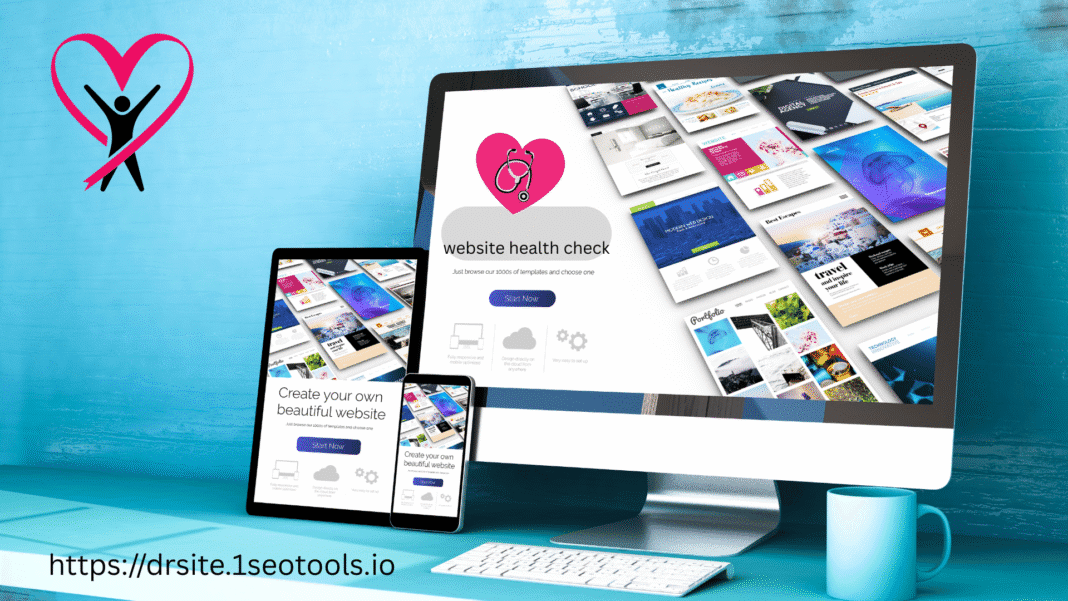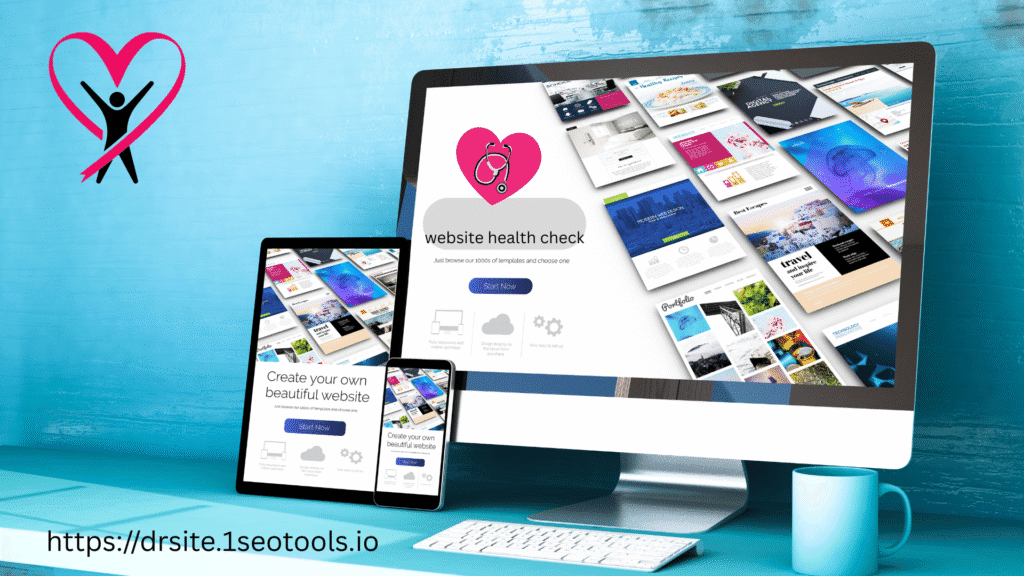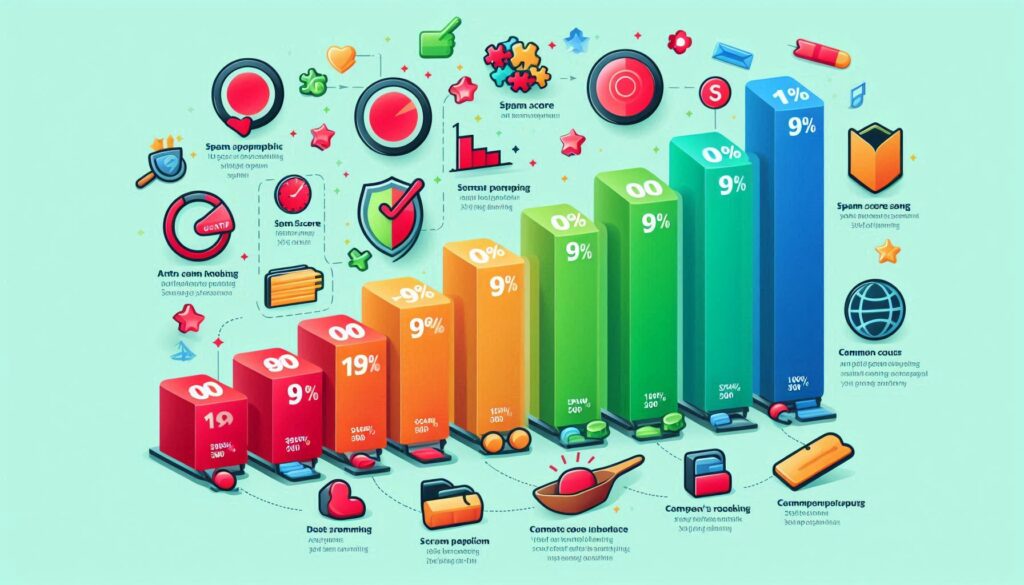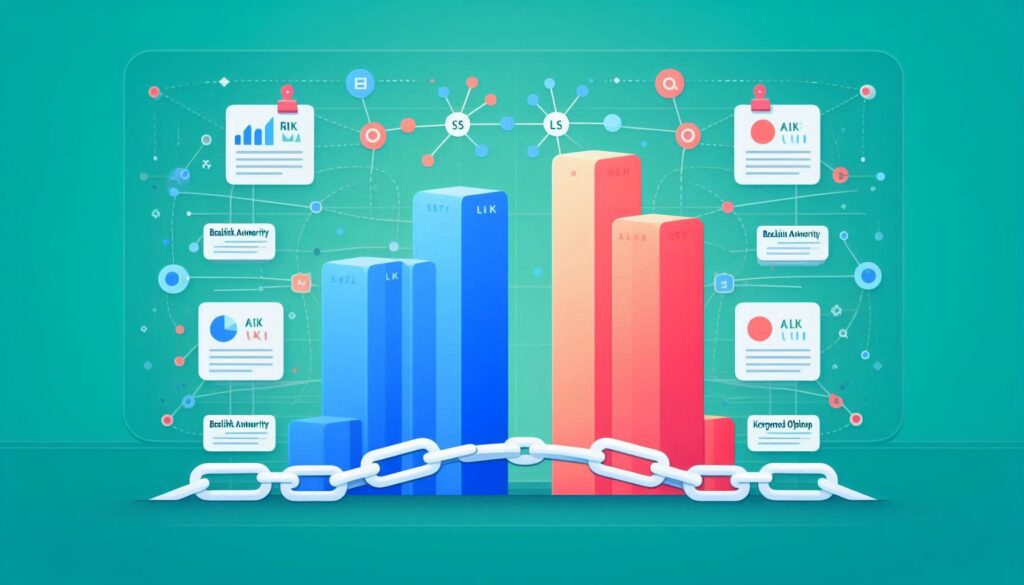
Check your website health score, fix SEO issues, reduce spam score, and boost performance with our free website health score checker tool.
✅ Final Outline for the Keyword: “Website Health Score Checker”
Website Health Score Checker – Analyze & Optimize Your Website Performance
🧠 What is a Website Health Score Checker?
🔍 Definition and Purpose
A Website Health Score Checker is a powerful tool designed to evaluate your website’s overall SEO status, technical health, and spam score. It scans multiple ranking factors such as page speed, on-page SEO, backlink quality, keyword usage, and mobile-friendliness to generate a score that reflects how “health” your site is in the eyes of search engines like Google.

💡 Why Do You Need One?
In today’s competitive digital world, simply having a website isn’t enough. Without regular health checks, your site may suffer from hidden issues such as:
- Broken links
- Slow page load times
- Duplicate meta tags
- Spammy backlinks
A health score checker helps you identify and fix SEO problems before they affect your rankings.
✅ Benefits of Using a Website Health Score Checker
- Boost SEO Rankings: Identify and resolve technical errors.
- Improve User Experience: Fix usability and performance issues.
- Monitor Website Progress: Track ongoing SEO improvements.
- Prevent Penalties: Detect harmful backlinks or black-hat SEO.
🧩 Key Features of a Website Health Score Checker
📊 Comprehensive SEO Audits
Get a full 360° scan of your website covering:
- Meta title & description checks
- Header tag structure (H1-H6)
- Canonical URL issues
- Mobile usability
- Page indexability
Ensure every page aligns with Google’s Webmaster Guidelines.
🔑 Keyword Analysis and Optimization
Analyze how your current keywords perform. The tool helps you:
- Find underperforming keywords
- Check keyword density and placement
- Identify LSI keywords for better content relevance

🔗 Backlink & Spam Score Analysis
Your backlink profile is a huge part of your website’s SEO health. This feature:
- Identifies toxic or spammy backlinks
- Shows link sources and domain authority
- Offers recommendations for disavow
The tool also calculates your Spam Score — a high score can lead to Google penalties.
You can try Moz’s free Backlink & Spam Score Analysis tool: Click here
⚙️ Page Performance Evaluation
Speed and responsiveness are key ranking factors. This feature audits:
- Page speed (Core Web Vitals)
- Mobile responsiveness
- Image optimization
- Server response time
Fixing performance issues can boost your Page Experience score, a major Google ranking factor.
🥇 Competitor SEO Comparison
Stay ahead by benchmarking your site against competitors. Learn:
- Which keywords they rank for
- How their backlink profile compares
- What on-page SEO strategies they use
Use this to improve your strategy and outperform competitors.
Use the SERanking tool for free to check the Competitor Analysis Tool:
Click here
🛠️ How to Use a Website Health Score Checker
🧾 Step 1: Enter Your Domain URL
Start by entering your full domain (e.g., https://www.yoursite.com). The tool will begin scanning your website automatically.
You can use the 100% free Health of your site and detect errors. To try the site: Click here
🕵️ Step 2: Perform a Comprehensive Audit
Once the scan is complete, review the audit covering:
- On-page issues
- Off-page factors
- Technical SEO errors
- Backlink problems
- Keyword suggestions

📈 Step 3: Analyze the Results
Review your health score (typically 0-100) and the categorized list of issues. Prioritize fixing:
- Critical errors first (e.g., broken canonical tags, duplicate content)
- Then warnings and recommendations
Focus on actionable insights that can improve your score the fastest.
🧩 Step 4: Implement Optimization Recommendations
Take direct action:
- Fix meta tag issues
- Remove harmful backlinks
- Compress large images
- Update outdated content
For WordPress users, many of these fixes can be done via plugins like Rank Math or Yoast SEO.
🔄 Step 5: Monitor and Track Progress
SEO is a continuous process. Use the tool regularly (monthly or weekly) to:
- Track keyword rankings
- Monitor site speed
- Ensure new pages are optimized
- Detect and fix new errors promptly
🔍 Understanding Your Website’s Spam Score
⚠️ What is Spam Score and Why it Matters?
Spam Score is a metric developed to estimate the likelihood of a website being penalized or flagged by search engines due to spammy characteristics. It’s calculated based on various signals such as:
- Linking from suspicious or low-authority domains
- Use of manipulative anchor texts
- Over-optimization of SEO elements
A high spam score can lead to reduced search engine trust, lower rankings, or even complete deindexing of your site.

✅ Results of a Good vs Bad Spam Score
- Good Spam Score (0%–10%)
Indicates that your website is considered safe, with a clean backlink profile and natural SEO practices. - Moderate Spam Score (11%–30%)
May raise flags for over-optimization or low-quality backlinks. Still recoverable with minor cleanup. - High Spam Score (31% and above)
Your site is likely flagged due to toxic links, duplicate content, or black-hat tactics. Immediate action is required to avoid ranking penalties.
🧹 Ready to Improve Your Spam Score?
Improving your spam score isn’t just about removing bad links — it’s about building credibility. This means:
- Auditing backlinks regularly
- Avoiding link farms or PBNs
- Creating high-value, trustworthy content
- Following Google’s quality guidelines
Use a tool like WebsiteSEOChecker.com to analyze and monitor your site’s spam score efficiently.
🔧 How to Improve Your Website’s Spam Score
🔍 Step 1: Analyze Your Backlink Profile
The first step is to audit your backlinks using tools like Ahrefs, Semrush, or WebsiteSEOChecker.com. Identify:
- Low authority or irrelevant links
- Links from foreign-language spam sites
- Sites with high spam scores linking to yours
🚫 Step 2: Identify and Remove Toxic Backlinks
Toxic backlinks are one of the biggest spam score boosters. They often come from:
- Link exchanges
- Blog comments
- Auto-generated sites
Manually review these links and classify them based on risk. Remove them where possible, or move to the next step.
📬 Step 3: Contact Webmasters or Use Disavow Tool
Try reaching out to the site owners to remove the toxic links. If that fails, use the Google Disavow Tool via Google Search Console:
- Compile a .txt file of harmful URLs
- Submit it to disassociate your site from them
This tells Google not to count those links in ranking your site.
🔗 Step 4: Build High-Quality, Relevant Backlinks
To lower spam score and boost domain authority:
- Create original, data-backed blog content
- Reach out for guest post opportunities
- List your site in reputable directories
- Get backlinks from niche-relevant authority sites
Focus on contextual backlinks within quality content, not just homepages or footer links.
🚀 Advanced SEO Strategies for Better Website Health
🔎 Common Issues Detected
Website health checkers commonly find:
- Duplicate title/meta tags
- Missing ALT text on images
- Orphan pages (no internal links)
- Broken outbound links
These directly affect crawlability, user experience, and ranking consistency.
🛠️ Advanced Fixes for Technical SEO
Once issues are identified, apply these advanced fixes:
- Use structured data/schema markup for better indexing
- Minimize CSS/JS files to improve loading time
- Fix canonicalization issues
- Use hreflang for multilingual sites

🆚 On-Page vs Off-Page SEO Enhancements
- On-Page SEO focuses on elements within your site such as:
- Title tags, headers, keyword placement
- Internal linking, image optimization, content formatting
- Title tags, headers, keyword placement
- Off-Page SEO deals with external factors like:
- Backlinks
- Brand mentions
- Social sharing
- Backlinks
Both are critical — but without strong On-Page SEO, Off-Page efforts can fall flat.
🛠️ Tools and Features on WebsiteSEOChecker.com
🧪 Specialized Audit Tools
WebsiteSEOChecker offers tools to evaluate:
- On-page SEO elements
- Meta tag structure
- Sitemap presence
- Robots.txt file accuracy
These tools help keep your website technically sound and Googlebot-friendly.
📈 Performance Monitoring Features
You can monitor:
- Core Web Vitals
- Bounce rate and dwell time
- Daily ranking changes
- Mobile page scores
Real-time data lets you respond quickly to performance drops or Google algorithm changes.
📊 H3: User-friendly Dashboard and Reports
The platform offers clean, actionable reports:
- Color-coded issues by priority
- Exportable PDF/CSV formats
- SEO check history comparison
- Easy-to-follow fix recommendations
This makes it ideal for marketers, SEOs, and site owners of all skill levels.
🔎 Frequently Asked Questions

Can I Use the Tool for Free?
Answer:
Yes! Our Website Health Score Checker offers a freemium model. You can run unlimited basic audits—including on‑page checks, keyword density scans, and spam‑score analysis—at no cost. To access advanced features like competitor benchmarking or priority support, you can upgrade to our Pro plan anytime.
On‑Page SEO Tip:
- Wrap this Q&A in FAQ schema markup (<script type=”application/ld+json”>…</script>) to target rich results.
- Link to your pricing page with optimized anchor text, e.g.
html
<a href=”/pricing” title=”Compare our Pro SEO plans”>Compare Pro SEO Plans</a> - Use the keyword variation “free SEO audit tool” naturally in the answer.
How Often Should I Run Health Checks?
Answer:
- Weekly Mini‑Checks: Perfect for high‑traffic or e‑commerce sites—catch broken links and performance dips fast.
- Monthly Deep Audits: Ideal for blogs or informational sites—review meta tags, backlink profiles, and page‑speed metrics.
- Post‑Update Scans: Always rerun the audit after major site changes or content launches to prevent new issues.
On‑Page SEO Tip:
- Display “Last checked on” dates using HTML5 <time> tags:
html
<p>Last audited: <time datetime=”2025-04-20″>April 20, 2025</time></p> - Include LSI keywords like “SEO audit schedule” and “site health monitoring” in subheadings.
H3: Is Keyword Density Still Relevant?
Answer:
While keyword density used to be a core ranking signal, today’s search engines prioritize semantic relevance and user intent. Instead of aiming for a strict percentage:
- Use your primary keyword and related terms naturally.
- Leverage header tags (H2, H3) and image alt text to reinforce topic relevance.
- Focus on answering your audience’s questions comprehensively.
On‑Page SEO Tip:
- Bold your primary terms: <strong>website health score checker</strong>.
- Add a hidden <dl> glossary section for definitions, which can help with long‑tail LSI queries.
H3: Can I Check My Competitor’s Website?

Answer:
Absolutely. Our competitor‑analysis feature lets you:
- Compare backlink profiles, anchor‑text distribution, and domain authorities.
- Identify keyword gaps by seeing which terms competitors rank for.
- Export side‑by‑side reports in PDF or CSV formats for deeper insights.
On‑Page SEO Tip:
- Insert a comparison table using <table> markup, with clear column headings like “Your Site” vs. “Competitor.”
- Link to a detailed case study page using descriptive anchor text:
html
<a href=”/case-studies/competitor-breakdown” title=”Competitor SEO Breakdown”>Explore Competitor Breakdown</a>
🚀 Let’s Start Improving Your Website Health Today!
🖥️ Enter Your Domain & Get Instant Insights
Ready to see your score in seconds? Simply enter your full domain in the hero section form:
html
- <form action=”/audit” method=”get”>
- <input type=”url” name=”site” placeholder=”https://yourdomain.com” required aria-label=”Enter your website URL”>
- <button type=”submit”>Run Free Audit</button>
- </form>
- Use a clear, action‑oriented CTA.
- Add alt=”Screenshot of audit results dashboard” to any accompanying image for accessibility and extra SEO relevance.
💼 Ready to Scale Your Business with a Healthier Website?
Transform your online presence with data‑driven insights:
- Upgrade to Pro for white‑label reporting, scheduled scans, and API access.
- Check out our internal <a href=”/case-studies” title=”SEO Case Studies”>Case Studies</a> to see how clients achieved top‑rankings.
- Subscribe to our newsletter for weekly SEO tips and alerts on algorithm updates.




















![SumoSEOTools PDF Addon Package Review [2025] Is it worth evaluating? SumoWebTools-Addon-Package](https://1seotools.io/wp-content/uploads/2025/03/SumoWebTools-Addon-Package-PDF-218x150.png)
![Always the Best SiteSpy : Visitor Tracking Analytics & SEO Review [2025] SiteSpy Visitor Tracking Analytics](https://1seotools.io/wp-content/uploads/2025/03/Visitors-analytics-2-218x150.png)
![Elevate Your SEO Strategy with Seo Tools Studio : Review [2025] Seo Studio Review 2025 | Professional Free SEO Tools](https://1seotools.io/wp-content/uploads/2025/03/studio-seo-tools-script-1-218x150.jpg)
![Review WP AMP — Accelerated Mobile Pages for WordPress & WooCommerce [2025] WP AMP — Accelerated Mobile Pages for WordPress & WooCommerce](https://1seotools.io/wp-content/uploads/2025/03/WP-AMP-for-WordPress-WooCommerce-218x150.png)
![Review of Prestashop SEO Optimizer Module-Advance SEO Expert Module [2025] Prestashop SEO Optimizer Module](https://1seotools.io/wp-content/uploads/2025/03/6-AdvanceSEOOptimizerRobot.txt-218x150.png)





Good admin
[…] Website Health Score Checker – Improve SEO & Performan 2025 […]
[…] Website Health Score Checker – Improve SEO & Performan 2025 […]